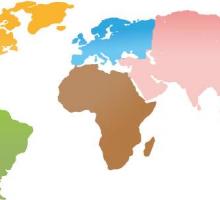Macroeconomics studies the behavior of economic aggregates. Macroeconomic variables are associated with economic aggregates: a country, a region, the population of a country, all companies in a country. For example, the aggregate production of a country is formed with the production of all its businesses, families, individuals, and its public sector. Other commonly used variables in the study of macroeconomics are inflation and unemployment.
Gross Domestic Product
The Gross Domestic Product is the monetary value of final goods and services produced by an economy in a given period of time, usually one year. The Gross Domestic Product is usually used as a measurement of a nation’s economic activity. If the GDP grows, it means that the economy increased its output.
Inflation
Inflation is the proportional variation of the Consumer Price Index over a period of time. Inflation is an important macroeconomic variable because it has a close relationship with other variables. For instance, high economic growth with low unemployment imply a risk to high inflation.
High inflation rates are undesirable for an economy, because inflation doesn’t affect all prices equally. High inflation rates produce changes in relative prices and affect economic growth.
A negative (lower than zero) inflation rate is usually not a good sign, specially if unemployment is high. When inflation is negative, it’s called deflation.Deflation combined with unemployment is a dangerous situation because economic agents have incentives to hold domestic currency as a way of savings. In this case, expansionary monetary policy can have little effect to increase the GDP.
Unemployment
Unemployment Rate is an important macroeconomic variable because it measures the percentage of the labor force currently unemployed and actively seeking employment. A high unemployment rate is an undesirable macroeconomic situation because it means that a lot of people cannot find a job.
Government Spending
Government Spending refers to government consumption, investment and transfer payments. Government Spending provides an indicator of the size of the public sector in an economy. Fiscal policy is used to influence other macroeconomic variables, like unemployment and inflation rate.
Interest Rate
The Interest Rate is the cost of borrowing money. The monetary authority (in the US, the FED, in other countries, Central Banks) play a key role in the interest rates, using regulation and intervention in monetary markets.
Interest rates influence macroeconomics through several channels. For instance, a high interest rate can be associated with lower inflation, because people will buy more bonds and bank investments, and this will result in less monetary expansion.
Exchange Rates
Exchange Rates play an important role in macroeconomics. All economy sectors that produce goods or services that can be exported or imported are heavily influenced by the exchange rate.
There are two types of exchange rates:
- Nominal Exchange Rate: The number of units of the domestic currency that are needed to purchase a unit of a given foreign currency.
- Real Exchange Rate: the ratio of a foreign price level and the domestic price level, multiplied by the nominal exchange rate. It measures the price of foreign goods relative to the price of domestic goods.
The nominal exchange rate influence the flow of capital, the price of financial assets and interest rates in the short term. The real exchange rate influence the competitiveness of different economic sectors of a country.



